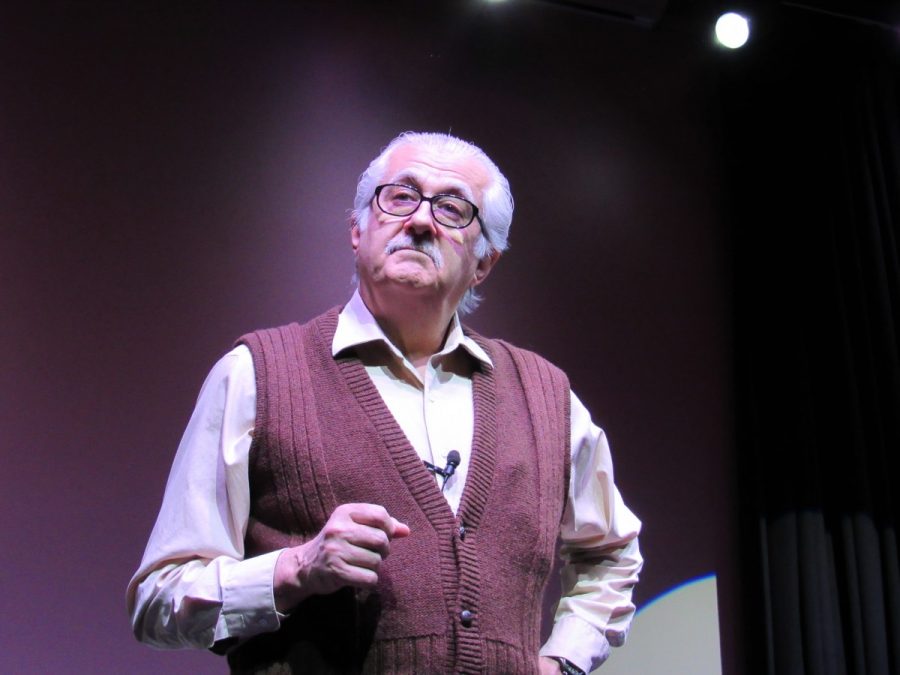Iowa actor portrays famous Des Moines Register cartoonist, conservationist
March 27, 2018
Actor Tom Milligan put on a one-man show in which he embodied Jay Norwood “Ding” Darling, a two-time Pulitzer Prize-winning cartoonist with the Des Moines Register.
The event took place on March 22 in Principal Black Box Theatre with around 50 people in attendance. Some in attendance were old enough to recall seeing Darling’s cartoons in the newspaper, as one audience member remarked.
As told in Milligan’s 45-minute performance, Darling grew up in Sioux City. He marveled at the natural beauty he saw on his uncle’s farm. As Darling got older, the nature he had adored was beginning to disappear. He was hired as a cub journalist by the Sioux City Journal.
“Emphasis on ‘cub’,” Milligan said.
It was Darling’s hobby of photography which gave him an advantage in the world of journalism, but it was a mistake which lead to Darling’s long and impactful career as a cartoonist.
When sent to cover a court case, Darling had forgotten to get a photo of the proceedings, and in an effort to make up for it, drew a quick sketch of what he remembered.
The paper ran it, and people started to pay attention.
During this time, Darling was also in a choir. “I was always a man of many interests,” Milligan said of Darling.
He met his wife, known as Penny, through an old college friend. Milligan mentioned Penny’s frequent correction of Darling’s spelling, a banter they would continue through their marriage.
Darling began working with the Des Moines Register in 1906. It was a long working-relationship only separated by a brief period of work in New York.
“The road always lead me back to Des Moines,” Milligan said as Darling. Coincidentally, Darling’s first cartoon in the Des Moines Register caused controversy by depicting a man shoveling coal into the pipe of a large monk, angering the coal mining community and the Catholic Church.
Darling was a strong conservationist, “I never ceased carrying in my wide-eyed imagination the wetlands of my youth,” Milligan said as Darling.
This sometimes went against the interests of Darling’s close friends, who were among the most powerful politicians in Washington. One of those friends included the 26th president of the United States, Theodore Roosevelt.
Roosevelt, “represented everything I thought was good and bad about modern conservation,” said Milligan as Darling.
He said it was the editorial freedom that Darling appreciated the most about his place in the Des Moines Register. One of Darling’s most well known cartoons is the tribute to Roosevelt after his death titled “The Long, Long Trail.”
Fitting of his eclectic personality, Darling also became one of the first Iowans with a pilot’s license.
Darling won his first Pulitzer Prize in 1923 for a cartoon titled “In Good Old U.S.A.”, and his second in 1942 for a cartoon titled “What a place for a waste paper salvage campaign.”
After the performance, Milligan started off a question-and-answer session by mentioning the reason conservation isn’t as strong today is because of a lack of strong, well-known conservationists. He also mentioned the inclusion of politics in the issue of conservation is what Darling would be the most upset about.
Milligan said his acting career has been about “being in the right place at the right time.” His next performance of The Art of Conservation will be April 5 in Milford, Iowa. More upcoming performances can be found at humanitiesiowa.org.
















